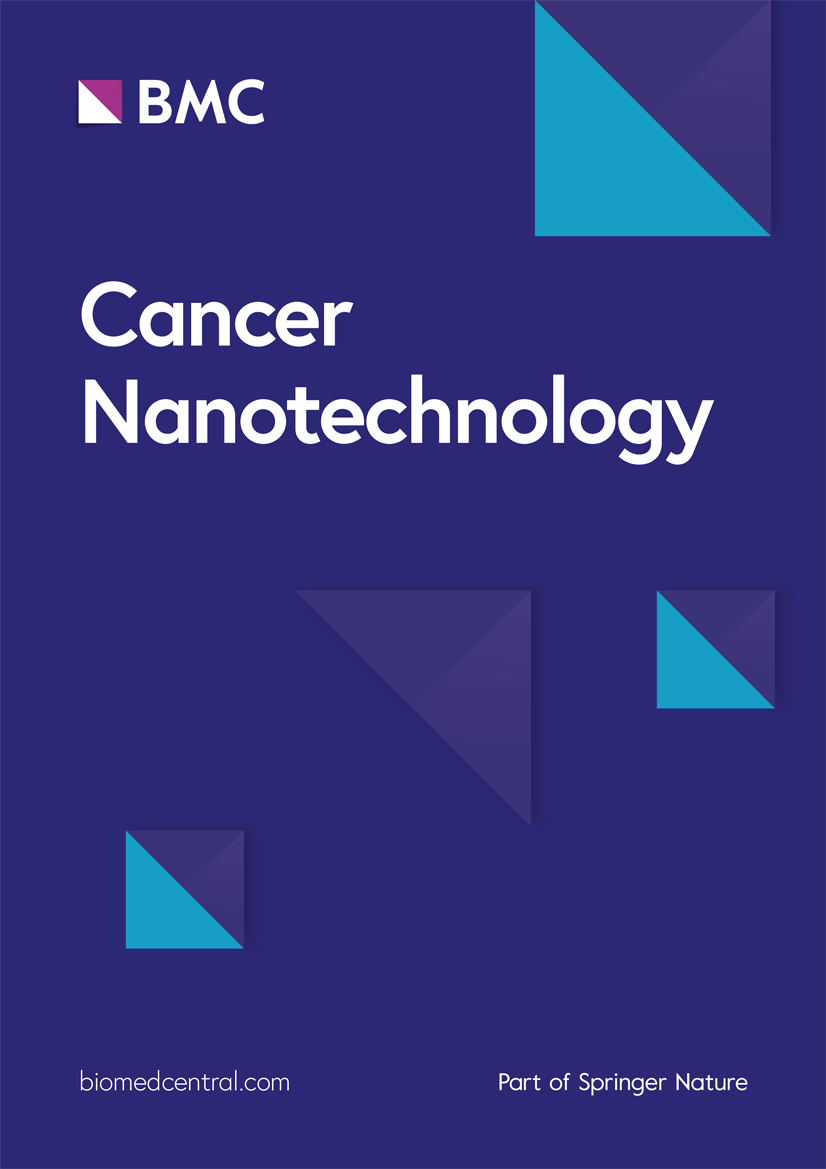利用生物合成的氧化钴纳米粒子推进结直肠癌治疗:关于其抗氧化、抗菌和抗癌功效的研究
IF 4.8
2区 工程技术
Q2 NANOSCIENCE & NANOTECHNOLOGY
引用次数: 0
摘要
结肠直肠癌(CRC)是全球第三大常见癌症,也是导致癌症相关死亡的第二大原因。传统的化疗虽然有效,但往往会产生严重的副作用,这凸显了人们对更高效癌症疗法的需求。纳米技术的最新进展促使人们开发出各种策略,旨在通过更精确地靶向癌细胞,最大限度地减少对正常细胞的毒性。在这方面,氧化钴纳米粒子(Co3O4 NPs)已显示出良好的抗癌潜力。我们的研究重点是评估利用弧菌 VLC(一种生物发光体)合成的 Co3O4 NPs 的抗氧化、抗菌和抗癌特性。VLC(一种生物发光细菌)合成的 Co3O4 NPs 的抗氧化、抗菌和抗癌特性。XRD 和 FTIR 分析证实成功合成了 Co3O4 NPs,其形态呈球形,平均直径为 60 nm。纳米粒子具有显著的抗氧化和抗菌活性。MTT 试验表明,纳米粒子对 CT26 细胞具有剂量和时间依赖性毒性,而对正常细胞的毒性相对较低。体内实验进一步证实,NPs 对 BALB/c 小鼠的肿瘤抑制效果显著,与顺铂的广泛毒性相比,对肝、脾和肾组织的副作用极小。这项研究验证了 Co3O4 NPs 的成功合成及其强大的抗氧化、抗菌和抗癌活性。生物合成的 Co3O4 NPs 是治疗 CRC 的一种很有前景的靶向方法。然而,要阐明其作用机制并将其应用于临床阶段,还需要进一步的研究。本文章由计算机程序翻译,如有差异,请以英文原文为准。
Advancing colorectal cancer therapy with biosynthesized cobalt oxide nanoparticles: a study on their antioxidant, antibacterial, and anticancer efficacy
Colorectal cancer (CRC) ranks as the third most common cancer globally and the second leading cause of cancer-related mortality. Traditional chemotherapy, while effective, often results in significant side effects, highlighting the need for more efficient cancer therapies. Recent advancements in nanotechnology have led to the development of strategies that aim to minimize toxicity to normal cells by more precise targeting of cancer cells. In this context, cobalt oxide nanoparticles (Co3O4 NPs) have shown promising anticancer potential. Our study focuses on evaluating the antioxidant, antibacterial, and anticancer properties of Co3O4 NPs synthesized using Vibrio sp. VLC, a bioluminescent bacterium. XRD and FTIR analyses confirmed the successful synthesis of Co3O4 NPs, which displayed spherical morphology with an average diameter of 60 nm. The nanoparticles demonstrated significant antioxidant and antibacterial activities. The MTT assay indicated that the NPs caused dose- and time-dependent toxicity against CT26 cells, while exhibiting relatively lower toxicity towards normal cells. In vivo experiments further confirmed the significant tumor suppressive effects in BALB/c mice, with minimal side effects on the liver, spleen, and kidney tissues compared to the widespread toxicity of cisplatin. This study verifies the successful synthesis of Co3O4 NPs and their potent antioxidant, antibacterial, and anticancer activities. The biosynthesized Co3O4 NPs represent a promising targeted method for CRC therapy. However, further research is needed to elucidate their mechanism of action and also their application in the clinical phase.
求助全文
通过发布文献求助,成功后即可免费获取论文全文。
去求助
来源期刊

Cancer Nanotechnology
Pharmacology, Toxicology and Pharmaceutics-Pharmaceutical Science
CiteScore
5.20
自引率
1.80%
发文量
37
审稿时长
15 weeks
期刊介绍:
Aim:
Recognizing cancer as a group of diseases caused by nanostructural problems (i.e. with DNA) and also that there are unique benefits to approaches inherently involving nanoscale structures and processes to treat the disease, the journal Cancer Nanotechnology aims to disseminate cutting edge research; to promote emerging trends in the use of nanostructures and the induction of nanoscale processes for the prevention, diagnosis, treatment of cancer; and to cover related ancillary areas.
Scope:
Articles describing original research in the use of nanostructures and the induction of nanoscale processes for the prevention, diagnosis and treatment of cancer (open submission process). Review, editorial and tutorial articles picking up on subthemes of emerging importance where nanostructures and the induction of nanoscale processes are used for the prevention, diagnosis and treatment of cancer.
 求助内容:
求助内容: 应助结果提醒方式:
应助结果提醒方式:


